The 50 States Project is a series of candid conversations with interior designers across the country about how they’ve built their businesses. This week, Bozeman, Montana–based designer Sara Marcille of Mountain Home Collective tells us how she fine-tuned her new-build and renovation experience to create a rock-solid career foundation, how she networked creatively to build her business during the pandemic, and why she says hourly billing is essential to encourage accountability.
When did you realize that you wanted to be a designer?
I feel very fortunate that I truly did have a huge aha moment. I was in Baltimore, going to school for apparel merchandising. I had had a couple of internships, and I was a little confused about what I wanted to do. But I had a next-door neighbor who was remodeling her town house in this cute, charming neighborhood called Hampden, and I would go over there in the evenings and she would ask me things like what paint color or trim style she should do. We would take these trips to Home Depot together. It all sort of bubbled up into this moment where I realized interior design is exactly what I should be doing. So right away, I pivoted in my degree and switched to the interior design program.
Where did you go from there?
I stayed in Baltimore for this incredible opportunity to work for a small, under-the-radar firm that was starting to make a name for themselves. The two women I worked for had the most creative, beautiful expression of interior design—even today, I still think about the color and pattern combinations they were coming up with at that time, and I found the environment really inspiring. While I was there, my dad moved out to Whitefish, Montana, so I visited a couple of times and started getting interested in some of the interior designers out there—people who weren’t afraid of color, who were doing really interesting things with scale and texture and pattern. That led me on my journey out to Montana.
I moved to Whitefish and ended up working for one of the top firms there for a number of years. I was still really young in my career, but one of the things I realized was that I really missed going to design centers. When I was living in Baltimore, I would go to the design center in Washington, D.C. I also was dating someone who lived in Atlanta, so I was at the Atlanta Decorative Arts Center all the time. In Whitefish, I felt as though I needed to spend more time in design centers to be able to provide the top-quality level of design expected by people who were coming to Montana to design their second, third, fourth homes. I was sort of putting together the pieces in my mind: If I want to own my own design firm someday, I should go to a city and get to know my reps and vendors better. So my now-husband and I moved to Chicago.
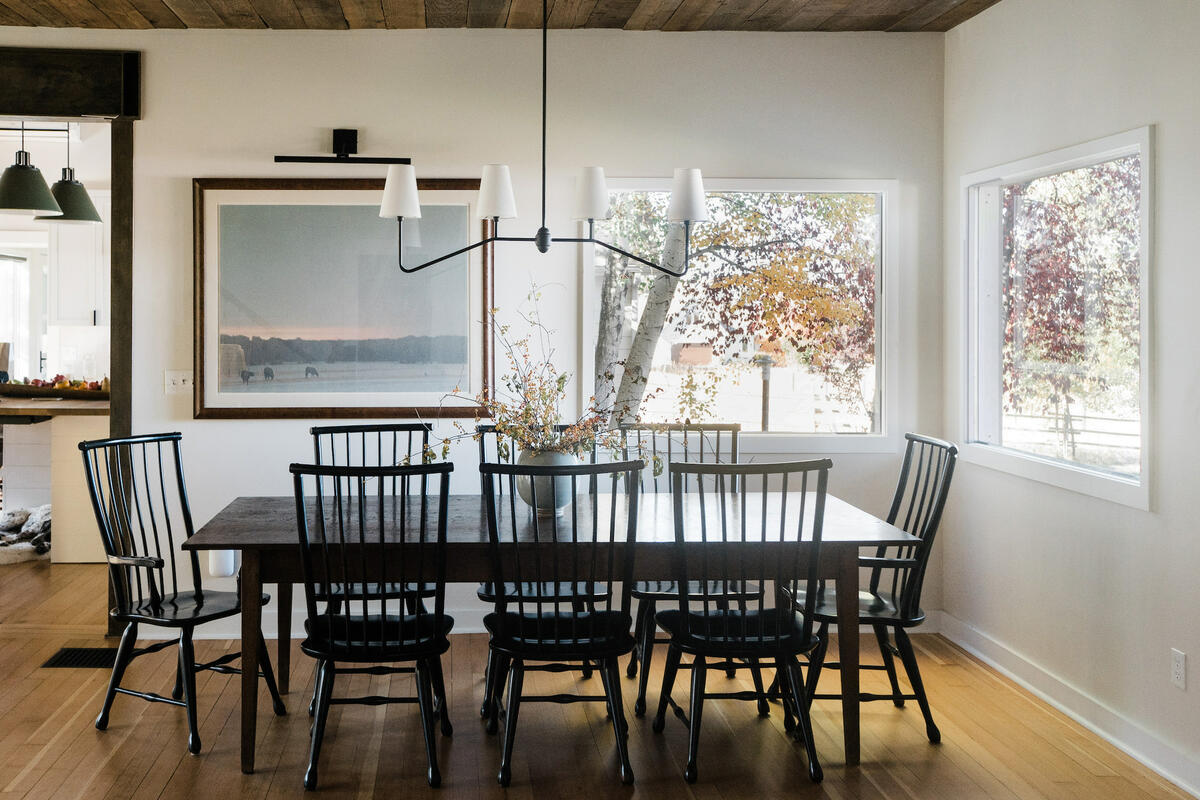
Was there something that pulled you to Chicago?
We made a list of five cities that met our requirements: It had to be easy to travel to; have a design center; and have great higher education, because my husband knew that he probably wanted to go to grad school. I had a couple of projects on the side that were starting to pick up, which allowed me to be flexible with where I went. So the first job he applied for that he was really excited about was in Chicago—and that’s where we ended up. And honestly, I’m so happy that we made that decision, because I think The Mart is one of the best design centers in the U.S.
Is that when you officially went out on your own?
At first, yes. When we first moved to Chicago, I was working on a home in Montana, a home in California—those were clients I had worked with on smaller projects at the firm in Montana; they heard that I went out on my own, and called me for their next remodel or small project because we already had a close working relationship—and then I had a few projects in Chicago. My husband was working at this tech startup and had all these friends to go out to happy hours with, and I definitely was looking for more of a community. I also realized that spending time in a city and working for someone who was nationally known would be a great feather in my cap for the rest of my career, and that I’d learn so much from someone who was top in their industry. I wanted to see how they took care of clients, how they approached design, everything like that. So I was a design director for a firm in Chicago for three years.
What did that role entail?
It was honestly incredible. I managed a team of five at its largest—designers, design assistants and interns—and developed close relationships with the clients. I was included in a lot of the high-level meetings with builders and architects from the beginning of the process, so I was getting to see a lot of things firsthand alongside someone with a lot of experience in the field.
Was the long game always to go back to running your own business?
When I worked there, I was really in the moment, soaking up everything that I could and applying it to the experience of our Chicago clients. But I also missed the mountains so much—I just missed Montana so deeply for all five years that we were in Chicago, and I knew that we would need to come back here, and that I’d probably have my own business at that point.
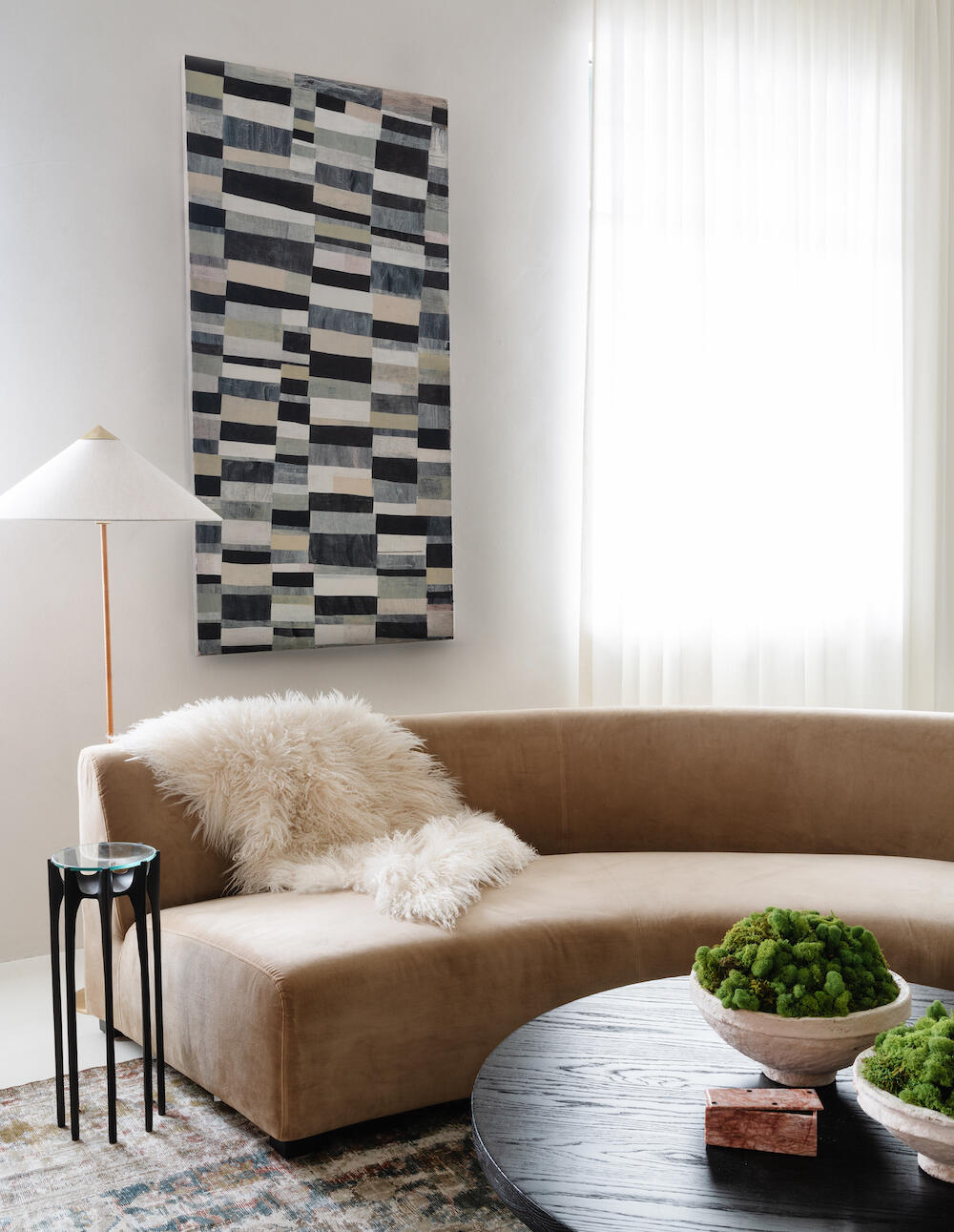
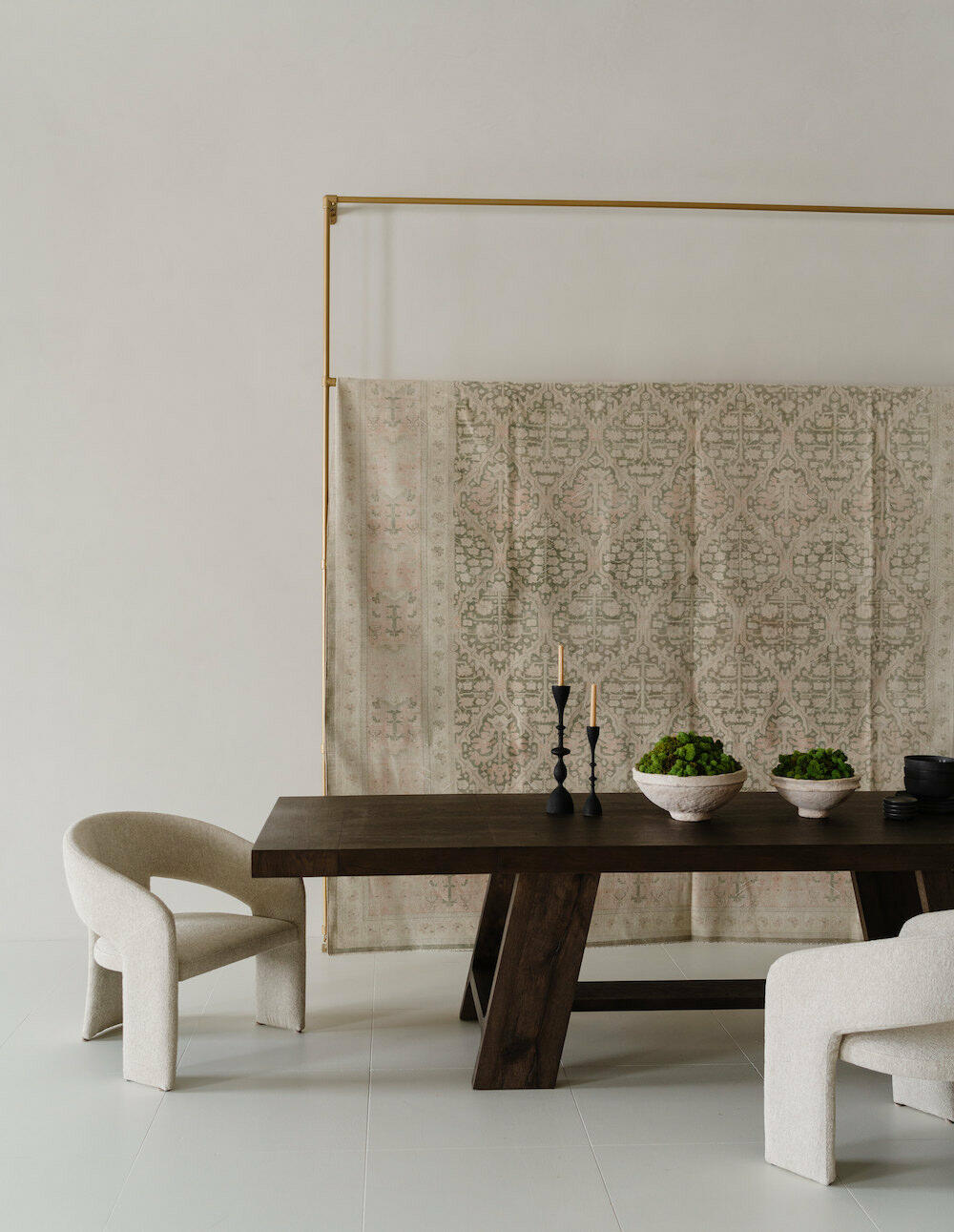
What prompted you to finally make that move?
By late 2019, I was working for myself again, and then my husband graduated in June 2020. It was the middle of the pandemic, and we were wrapping our heads around when we were going to make the move. But instead of moving back to Whitefish, we were interested in Bozeman—we had a lot of friends who lived there, he had gone to undergrad there, and I was intrigued by the amount of high-end architecture and design in the area. So that’s what we did, and I was just off to the races. The idea of Mountain Home Collective had come to me while I was living in Chicago, crying over how much I missed the mountains, so I already had a name and a vision, along with years of saved Pinterest boards of fabrics, lighting and finishes I’d found over the years—things that were never really applicable in Chicago or a city home, but that I was drawn to and excited to finally use once I was out west.
How did you get the business off the ground, and where did the early projects come from?
I started just hitting the pavement, introducing myself to a lot of the different contractors and architecture and real estate firms here in town. It was still the pandemic, so I’d walk in with a mask on, hand over a bag of goodies and a couple of magazines and business cards, and I think people really appreciated it during a time when that was a little bit harder to do. When I was introducing myself to people in the industry, it was very helpful that I had worked in Montana previously. I remember this one project with a contractor here in town, where I was so excited to get the job in the first place. I had a meeting with him to pitch him on Mountain Home Collective, and he called me about a week later and said, “You know, I think I’d like to have you come look at my house.” He and his wife were showing us some images they had saved over the years, and one of them was of a fireplace that I had designed when I was living in Whitefish years and years ago, which made them more comfortable with my experience. That, strangely, has been a theme for our firm since we opened—we’ve worked with a lot of contractors on their own homes here in town. And I think it’s because they very quickly get an understanding of how much construction knowledge I have.
How much of the work you do now is rooted in the construction process?
The arc that I really like about my career so far is when I was in Whitefish, I was working on new construction builds, and then I really cut my teeth on remodels in Chicago. Remodeling—to me, that’s the hard work. You’re forced into a deeper level of education during a remodel, and a lot of builders know that [and are looking for] a partner who’s really good at collaborating, and who’s really good at coming up with creative solutions, and being able to calmly and effectively discuss those solutions with a client to make them feel taken care of and comfortable during what’s a very tumultuous time. All of that has led me to having a deep understanding of the construction process, so [with] a lot of our very successful projects, we get involved very, very early on in the process. We’re usually brought in as soon as the drawings from the architect are near completion, but before they’ve gone into engineering. That way, we get an opportunity to work with the client, the builder and the architect on any changes that we would like to see, and have conversations about the expectations the client is going to have so that they feel like they really understand what they’re getting and what decisions they’re going to be making in the future.
How are you deciding what you say yes to and what you pass on? What are the right projects for your firm now?
That has a lot to do with the client and what they are looking for. I feel so fortunate that the clients we’ve had so far have all had this really cool vision for the way that they want to live and feel in their home. Right now, the projects that we say yes to are definitely from people that we know, so we’re not really saying no to too much. We do have a little bit of a waiting list, but overall, we’re saying yes to clients who know that they want to create a magical experience for themselves and for their families while they’re here in Montana, whether they live here full-time or it’s a special place where they’re going to invest in and spend their free time.

When did you realize you needed to start hiring, and what does your team look like?
Something that I learned many years ago, and that I told myself from the beginning, was that as soon as I go out on my own, the first person that I need to hire is a bookkeeper. For the first year or so, it was just me and my bookkeeping team, which is through an [external] service geared toward interior designers. But I have always known that to get to where I want to go, I need a team. I was nervous about making my first hire, but I knew I had enough work to hire another interior designer, so that’s what I did first. I knew that if I hired an intern or a design assistant, I would be able to get a certain amount of help out of them, which would have been great, but I felt like I needed my right-hand person right away.
From there, we hired an intern, who has been growing with us for two and a half years. Her title is going to change to interior designer in the next couple of months. And then, just as I was realizing I needed someone up in Whitefish to check in on projects for me every once in a while during the pandemic, I heard from the woman who did the flowers for my wedding there. I remember seeing her running around, getting everything done that day, and I was like, “Man, that girl knows how to hustle.” She knew I had started Mountain Home Collective, and she reached out to say, “I’m looking to get into interior design.” And I said, “Hold on for a month or two, and I can start giving you some part-time work.”
So she would do job site check-ins with me, and she was there when we had to install furniture in Whitefish. Then I got pregnant. And it was twins. And three weeks later, my right-hand designer also got pregnant. I was about to give the Whitefish woman a full-time offer when she emailed me saying, “I really think I’m ready to go full-time. Do you have availability?” And so she became our design coordinator. She’s our Whitefish contingent—she does job-site walk-throughs and check-ins up there—but she also handles all things expediting and customer service for our business. At the time, the amount of hours that we were spending checking on delayed freight, broken items and things that didn’t show up correctly, and tracking exactly when they were going to be getting in—it all felt unquantifiable. But now it is quantifiable. We now also have an intern who became a design assistant, and our most recent full-time hire is an interior architect, who will be doing all of our renderings and drawings. So today, we are a team of six.
How have you approached billing for your work?
I’ve seen it done many ways over my career, and I think hourly billing is the most effective and transparent way for everyone to be held accountable for the amount of work that a project requires. We have a tiered rate for our team, and then we show every hour down to 15-minute [increments] on a monthly basis. Now, I have a pretty strong stance on the idea that if there’s a mistake that happens that had nothing to do with the client—maybe the fabric company sent the wrong color or something like that—I don’t really think that the client should be billed for that. They might see that we dealt with that on their bill, whether it’s a half hour or 12 hours, but they’ll see that they were charged zero for it. But I think it’s important to show the time that went into it.
Do you do a markup on products in addition to that hourly?
Yes, we do. But the way that I discuss that with clients is that they get to see discounts on products. We go through and explain what “retail” actually means—we explain that with a retail item in a store, there can be as much as a 100 percent markup, so you can expect to see anywhere from 20 to 35 percent savings on that item with us. At the end of the day, clients like to know that they’re saving money on items instead of always thinking about how much a firm is making on items. I think the mentality behind it is just a little lovelier.
There isn’t much of a downside to that approach. The one place it gets challenging is with big-box stores. And honestly, the more and more horror stories that we have from these big-box retailers, the more we try to get clients to just not even look there. I mean, we have one of these stores that lost the legs to a coffee table, and we’ve been dealing with where these missing legs are for maybe eight months now. It’s just like, “Why?” If it was a trade brand, we would have been able to just get on the phone with our rep and call it a day. Now, we don’t pass on any discounts for big-box stores because the margin is so small that we just need to capture that for all of the customer service headaches we know that we’re going to be dealing with. So that’s also written out in our contract that the client will pay retail price for any big-box stores.
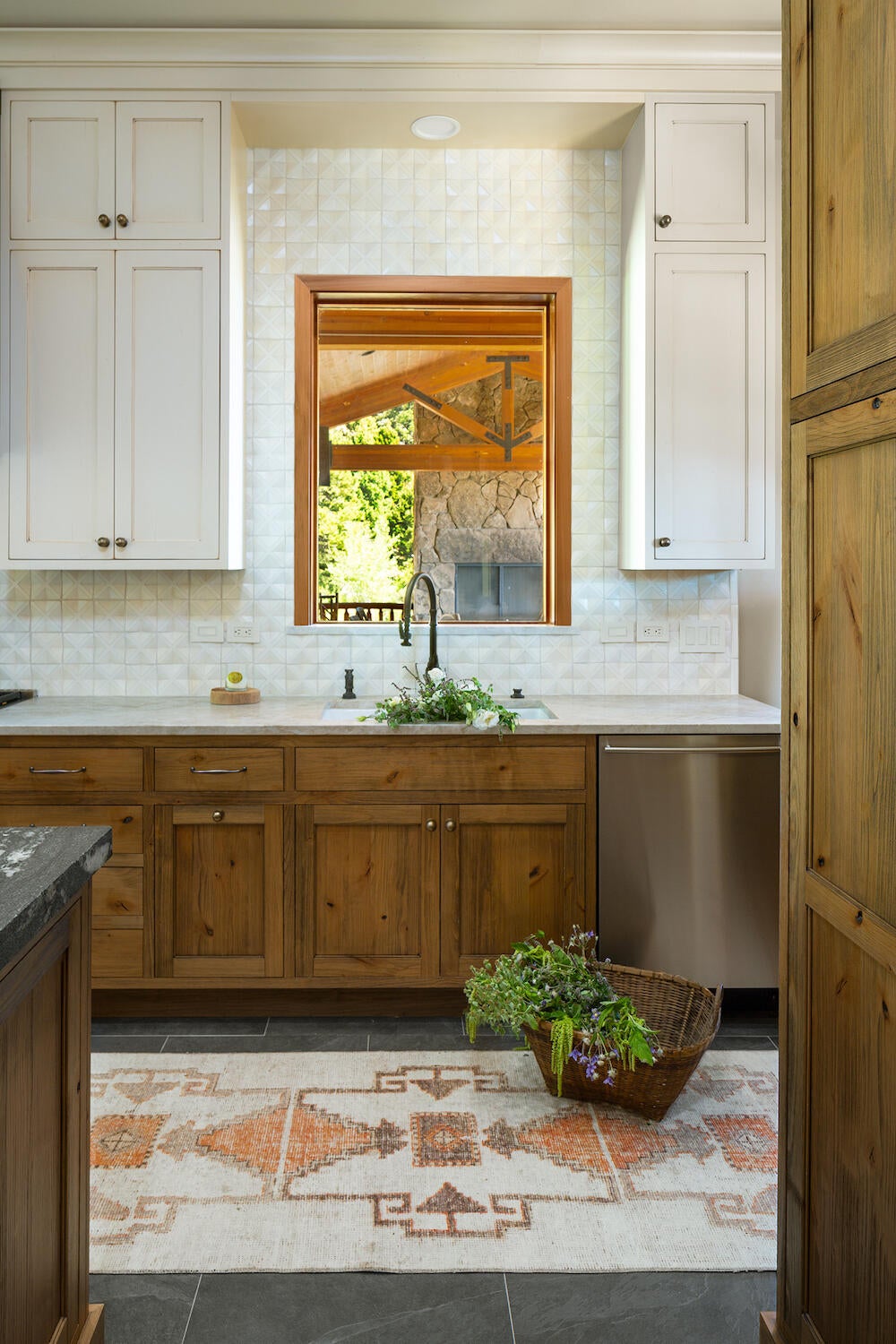
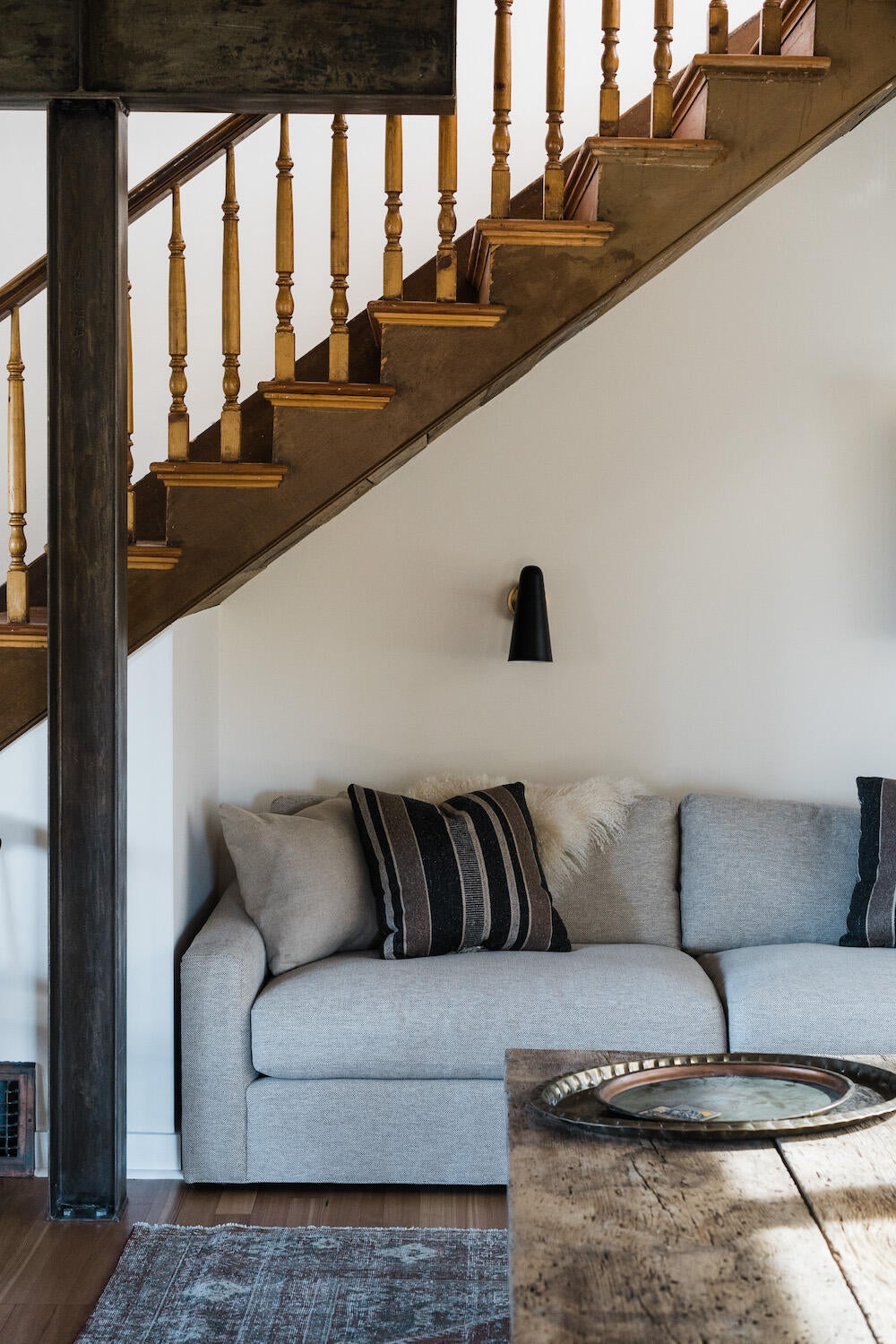
Can you tell me a bit about the Montana design scene?
Our location informs all of the work that we’re doing. There’s an amazing amount of creativity in the design scene in Montana. Part of that may come from the fact that a lot of the homes are second homes, so people are less afraid to let designers push the boundaries. You’re not questioning yourself every single day with things like, “I just need to do a white kitchen because I’m gonna get sick of anything else.”
Have most of your clients worked with a designer before when they come to you?
A lot of them have; maybe about half. And Covid was interesting [because now] people are like, “Oh, well, designers can work anywhere now.” Montana itself has some specific challenges that make contractors and architects push to work with someone local because it’s easier to work with someone who understands the labor shortage issues when it comes to freight and delivery, and the length of time it takes to get items here. In Montana, we’re really lucky to have a great number of very talented trades in metalwork, iron, woodworking, timber resources, all of those things that are so difficult to find in Chicago. But in Montana, workrooms are limited. Some of our custom upholstery shops are literally booking 36 months out. The landscape of design here is a little rough-and-tumble, just like the West is. We are still a more remote place compared to a lot of the country, but there are really amazing talented people here who are doing really creative things in the interior design and architecture world.
What is the one thing you know now that you wish you had known when you started your firm?
Probably, just how fast it can all go—the growth can happen fast. I’m proud of myself for the risks that I took, for the things that felt risky, and how I really believed in the vision of the company. That gave me the confidence to move quickly, but it still happened fast.
What does success look like for you?
Success for me looks like continuing to be able to foster an amazing environment for my team. I hope the team members I have now stay with me forever—they’re incredible. Success also looks like continuing to have these clients we’ve attracted, who are coming to us for their Montana dream home. And personally, I would love to build a home with and for my family. I cannot wait for my husband to be my client—I’m so looking forward to creating something magical for him!
What I’m working on right now is improving the processes in our business, because the more we crank down on these amazing processes—I would like to always be the creative director for everything, but I also really like working on the business itself. And as my team gets more and more talented at making really strong design decisions, I think I would like to be able to focus more on business development and be the creative director, but loosen my schedule a touch to spend more time with my family, and maybe not always being involved in every single grout color that’s picked.
To learn more about Sara Marcille, visit her website or find her on Instagram.




























